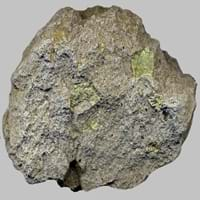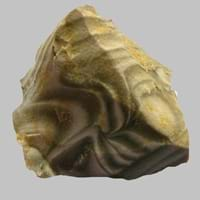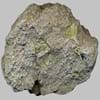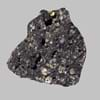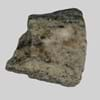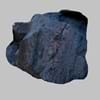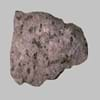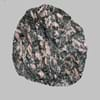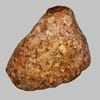Definition
Minette is a variety of Lamprophyre and is porphyritic alkaline igneous rock which is mainly dominated by biotite and potassic feldspar
Flint is a hard type of sedimentary rock that produces a small piece of burning material when hit by steel
Discoverer
Unknown
Unknown
Etymology
From French mine ore, mine + ette
From Old English flint - a type of rock mainly known for high hardness and for giving off sparks when struck
Class
Igneous Rocks
Sedimentary Rocks
Sub-Class
Durable Rock, Medium Hardness Rock
Durable Rock, Hard Rock
Group
Plutonic
Not Applicable
Other Categories
Coarse Grained Rock, Fine Grained Rock, Opaque Rock
Fine Grained Rock, Opaque Rock
Texture
Porphyritic
Banded, Rough
Color
Black, Bluish - Grey, Brown, Dark Greenish - Grey, Green, Grey
Black, Brown, Green, Grey, Red, White
Durability
Durable
Durable
Scratch Resistant
Yes
Yes
Appearance
Dull, Banded and Foilated
Glassy or Pearly
Interior Uses
Countertops, Decorative Aggregates, Interior Decoration
Decorative Aggregates, Homes, Interior Decoration
Exterior Uses
As Building Stone, As Facing Stone, Garden Decoration
As Building Stone, As Facing Stone, Garden Decoration, Office Buildings, Paving Stone
Other Architectural Uses
Curbing
Curbing
Construction Industry
As Dimension Stone, Cement Manufacture, for Road Aggregate, Making natural cement, Manufacture of Magnesium and Dolomite Refractories
Arrowheads, Cutting Tool, Spear Points
Medical Industry
Taken as a Supplement for Calcium or Magnesium
Not Yet Used
Antiquity Uses
Artifacts, Monuments, Sculpture, Small Figurines
Artifacts
Commercial Uses
An Oil and Gas Reservoir, As a Feed Additive for Livestock, Gemstone, Metallurgical Flux, Production of Lime, Soil Conditioner, Source of Magnesia (MgO)
Creating Artwork, Gemstone, In fire-starting tools, Manufacture of tools, Metallurgical Flux, Jewelry, To ignite fire, Used in flintlock firearms
Types
Minette, Alnoite, Camptonite, Monchiquite, Fourchite, Vogesite, Appinite and Spessartite
Not Available
Features
Always found as volcanic pipes over deep continental crust, Host rock for Diamond, Is one of the oldest rock, Surfaces are often shiny
Clasts are smooth to touch, Easily splits into thin plates, Has High structural resistance against erosion and climate
Archaeological Significance
Monuments
Used
Not Yet Used
Famous Monuments
Data Not Available
Not Applicable
Sculpture
Used
Not Yet Used
Famous Sculptures
Data Not Available
Not Applicable
Pictographs
Used
Not Used
Petroglyphs
Used
Not Used
Figurines
Used
Not Yet Used
Formation
Minette formation takes place deep beneath the Earth’s surface at around 150 to 450 kms, and are erupted rapidly and violently.
Flint is formed by the decomposition and compaction of various organisms such as sponges and diatoms under the water.
Mineral Content
Amphibole, Carbonate, Garnet, Micas, Olivine, Phlogopite, Pyroxene
Silicon
Compound Content
Aluminium Oxide, NaCl, CaO, Iron(III) Oxide, FeO, Potassium Oxide, MgO, MnO, Sodium Oxide, Silicon Dioxide, Titanium Dioxide
Silicon Dioxide
Types of Metamorphism
Burial Metamorphism, Cataclastic Metamorphism, Contact Metamorphism, Hydrothermal Metamorphism, Impact Metamorphism, Regional Metamorphism
Not Applicable
Types of Weathering
Biological Weathering, Chemical Weathering
Not Applicable
Types of Erosion
Chemical Erosion, Coastal Erosion, Sea Erosion, Wind Erosion
Chemical Erosion, Coastal Erosion, Water Erosion
Grain Size
Fine to Coarse Grained
Very fine-grained
Fracture
Conchoidal
Conchoidal
Porosity
Very Less Porous
Highly Porous
Luster
Subvitreous to Dull
Vitreous
Compressive Strength
Not Available
Cleavage
Conchoidal
Non-Existent
Toughness
Not Available
1.5
Specific Gravity
2.86-2.87
2.5-2.8
Transparency
Translucent to Opaque
Translucent to Opaque
Density
2.95-2.96 g/cm3
2.7-2.71 g/cm3
Specific Heat Capacity
Not Available
Resistance
Heat Resistant, Impact Resistant
Heat Resistant, Impact Resistant, Pressure Resistant, Wear Resistant
Deposits in Eastern Continents
Asia
Russia
Azerbaijan, China, Russia
Africa
Angola, Botswana, Cameroon, Ethiopia, South Africa
Not Yet Found
Europe
England, Hungary, Iceland, United Kingdom
Austria, Belgium, Cyprus, Denmark, France, Germany, Italy, Malta, Netherlands, Poland, Portugal, Romania, Spain, Sweden, Switzerland, Turkey, Ukraine, United Kingdom
Others
Antarctica, Greenland
Not Yet Found
Deposits in Western Continents
North America
Canada, Mexico, USA
USA
South America
Argentina, Colombia, Ecuador
Bolivia
Deposits in Oceania Continent
Australia
New South Wales, New Zealand, Queensland, South Australia, Western Australia
New Zealand, South Australia
All about Minette and Flint Properties
Know all about Minette and Flint properties here. All properties of rocks are important as they define the type of rock and its application. Minette belongs to Igneous Rocks while Flint belongs to Sedimentary Rocks.Texture of Minette is Porphyritic whereas that of Flint is Banded, Rough. Minette appears Dull, Banded and Foilated and Flint appears Glassy or Pearly. The luster of Minette is subvitreous to dull while that of Flint is vitreous. Minette is available in black, bluish - grey, brown, dark greenish - grey, green, grey colors whereas Flint is available in black, brown, green, grey, red, white colors. The commercial uses of Minette are an oil and gas reservoir, as a feed additive for livestock, gemstone, metallurgical flux, production of lime, soil conditioner, source of magnesia (mgo) and that of Flint are creating artwork, gemstone, in fire-starting tools, manufacture of tools, metallurgical flux, jewelry, to ignite fire, used in flintlock firearms.
